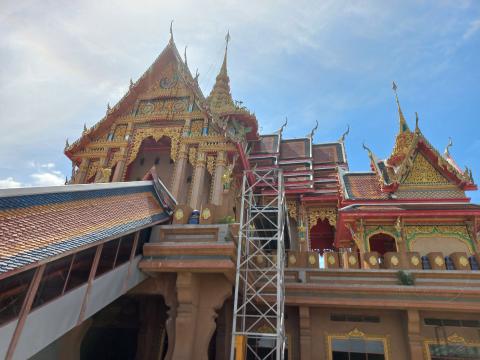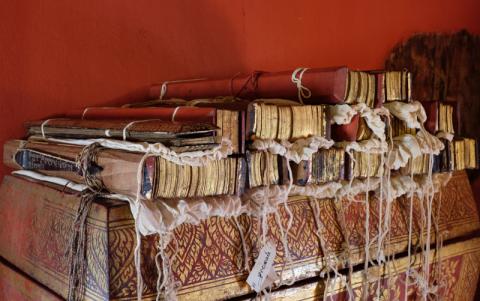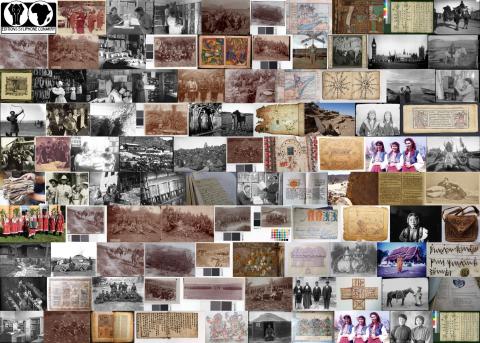
Aims and objectives
The Mons of Thailand and Burma were regional cultural and religious intermediaries and supported a palm leaf manuscript tradition into the 1920s. No official Thai body has ever digitized these manuscripts. Among them are texts unknown in Burma, which are key to understanding recent history and the Mon role in intellectual history. The collections have been exposed to vermin and flooding. Disinterest has also led to their destruction. Today, young Thai Mons are interested in their heritage and the time is ripe for this project.
The plan is to survey about 10-15 manuscript collections over the course of this preliminary grant. Collections vary in size from fifty to several hundred manuscript “bundles,” which may or may not contain more than one text. It is estimated that in any given collection there will be around 15 bundles of interest. For the purposes of this grant, the bundles will be screened for those which are complete, undamaged, and easy to read. A conservative estimate would put the number of bundles to be digitised at around 100. A typical bundle will contain approximately 26 “faces”—the front and back of the palm leaf—although some secular texts can have 40 or even 80 faces. A conservative estimate would put the number of images at around 3,500.
Outcomes
Over the course of two months (January 6-March 5 2019), the research team gathered the names of some 28 Mon temples/collections in and around Bangkok. This was done by word of mouth from the initial temples visited and through conversations with local experts. Of the 28 temples, a total of 25 were visited; the remaining three were far away from Bangkok in places like Chiang Mai, some 400 miles north. Six temples did not have, or no longer had, Mon-language manuscripts.
A survey was produced as part of the project outputs.
The records copied by this project have been catalogued as:
- EAP1123/1 Wat Cet Riw Collection วัดเจ็ดริ้ว (Late 19th century-Early 20th century)
- EAP1123/2 Wat Sirimongkhon Collection วัดสิริมงคล ဘာသိရိမင်္ဂလ (Late 19th century-Mid 20th century)
- EAP1123/3 Wat Saladaeng Neua Collection วัดศาลาแดงเหนือ ဘာပြာန် (Late 19th century-Early 20th century)
- EAP1123/4 Wat Metārāng Collection วัดเมตารางค์ (Mid 19th century-Early 20th century)
- EAP1123/5 Wat Makhām Ratburi Collection วัดมะขาม ဘာမင်ဂၠန် (Early 19th century-Early 20th century)
- EAP1123/6 Wat Makhām Pathumthānī Collection วัดมะขามဘာမင်ဂၠန် (19th century)
Due to the cyber-attack on the British Library in October 2023, the archives and manuscripts database is currently inaccessible and we are unable to provide links to the catalogue records for this project.





